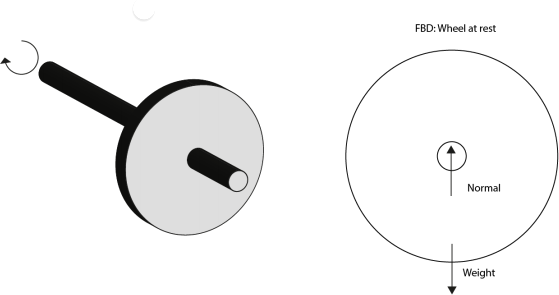ENG1014 - Engineering Numerical Analysis - S1_2023 Question 22-24
Hello, dear friend, you can consult us at any time if you have any questions, add WeChat: daixieit
ENG1014 - Engineering Numerical Analysis - S1_2023
|
|
A flywheel is suspended in the air, and being driven by a torque applied to its axle. Unfortunately, the wheel has not been connected firmly to the axle, and the only thing holding the two parts together is friction from the weight of the wheel - if the wheel's weight is supported, the axle can rotate freely. If too much torque is applied, the axle will slip.
The wheel can be modelled as a solid disc of mass 4.0 kg and diameter 0.5 m. The axle is long and quite heavy; it has a diameter of 0.08 m, and a mass of 10 kg. When connected, the wheel/axle system has a moment of inertia of 0.136kg.m2. The static coefficient of friction between the wheel and the axle is 0.43. Please give all your answers to at least 3 significant figures. (a) A constant torque of 0.4 N.m is applied to the axle, and no slippage occurs. If this torque is applied for 10 seconds, and the wheel starts from rest, what will the final rotational speed be?
ωf(rad.s-1) = (b) What will be the translational speed at the edge of the flywheel?
v edge (m.s-1) = (c) Calculate the maximum magnitude of torque that could be applied to the axle without the wheel slipping.
Tmax (N.m) = Submit your handwritten workings for the questions above to obtain method marks
In 1 sentence, describe a calculation or situation for this wheel/axle system where the coefficient of kinetic friction would be relevant
|
||||||||||||||||||
2023-08-01
